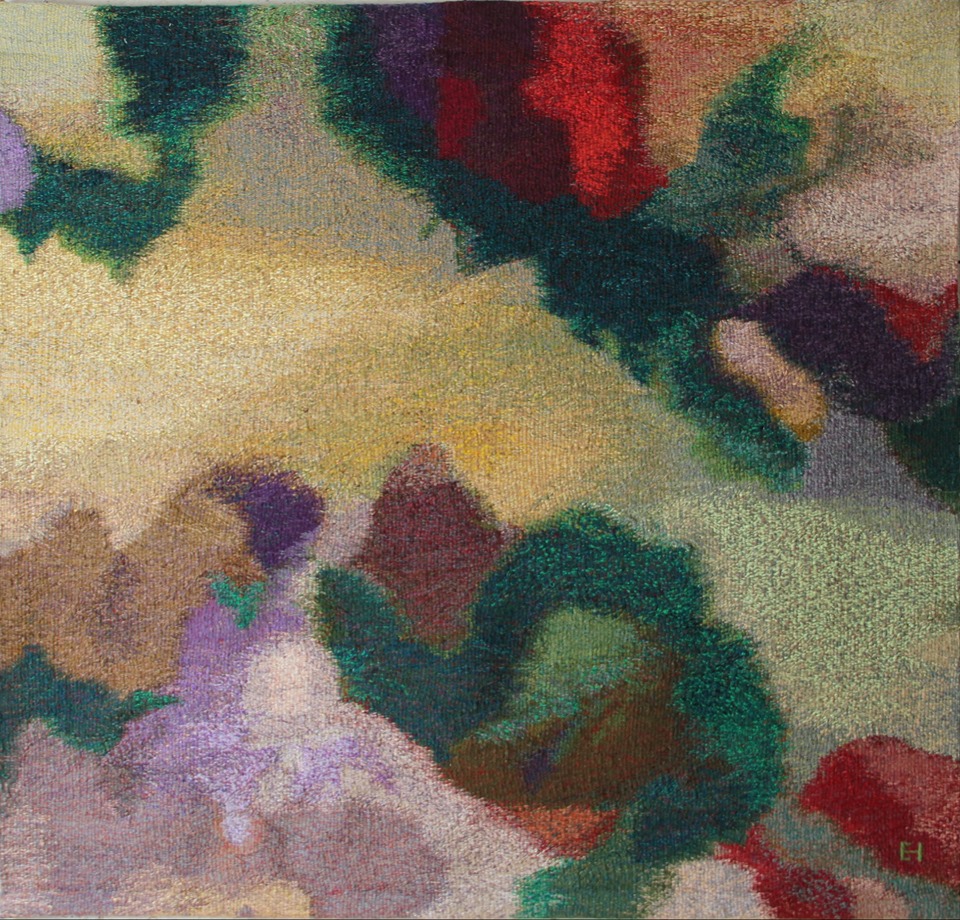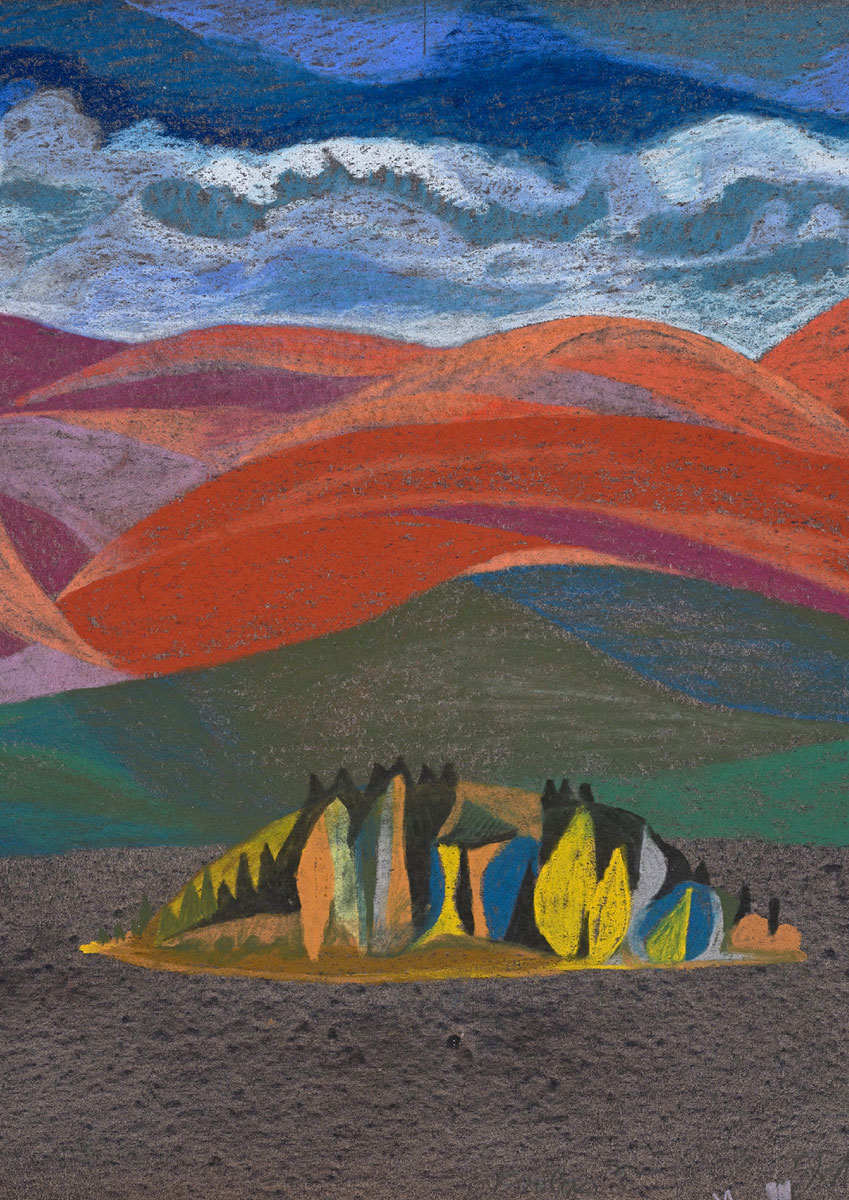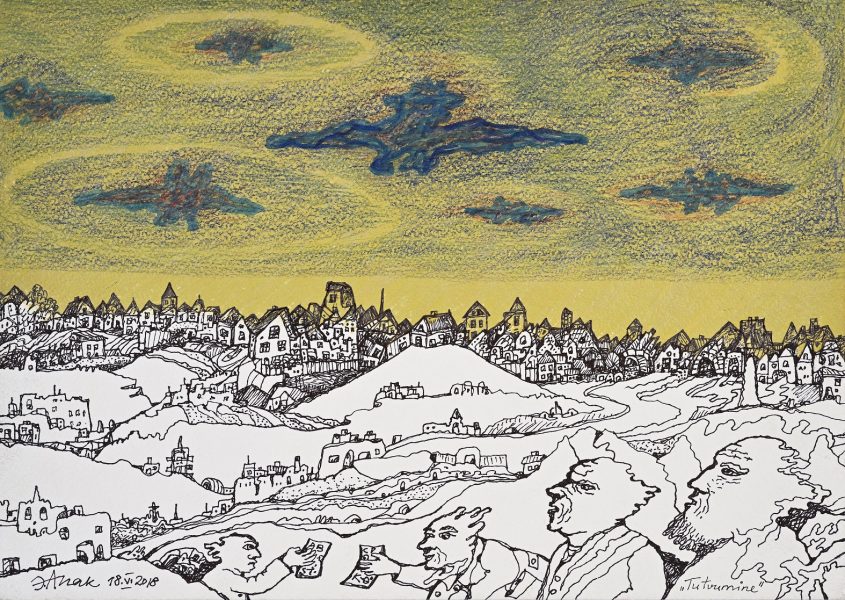
|
ON
LIMESTONE
Gobelin
Exhibition by Ehalill Halliste
inspired by the cross-sections of the
national stone of Estonia
December 8, 2019 - February 9, 2020
Deep in the
limestone under my feet is the swash of
seashells,
But I am allowed to smooth just the silence
on its face.
Ellen Niit. Song of Limestone,1965
Ehalill Halliste picktures limestone
surfaces sintered in sea bottom during
millions of years and weaves the structures
and ornaments of limestone – the national
stone of Estonia – into her gobelins. It is
a vivid documentation depicting surprisingly
variegated composition and palette of
colours.
Some time ago I was looking for a good idea
for a monument f or a dear person of great
mind, from publications about limestone. I
also found inspiring substance for my
gobelins – Estonian limestone
cross-sections.
Ehalill Halliste (born in 1948) studied
textile art at the National Art Institute of
Estonia in 1971-1976. After working at ARS
and also as a teacher, since 2002 she is a
freelancer. She has been given lots of
prizes, among others also the honour of the
White Star.
On May, 4, 1992 Limestone was declared
the national stone of Estonia. Especially,
because of the Lasnamägi building limestone,
which reveals in the North-Estonian cliff.
The building limestone is not colourful but
it is possible to paint marvellous patterns
of stone that seems just gray at first
glance.
Kalle Suuroja: ABC of Stones/ Estonian Rocks
2004
Limestone is
Estonian national stone that enriches oour
nature and culture. Without it we would not
have the churches, manors, living houses in
towns or many other limestone buildings as
they appear to be. Limestone buildings are
self-evident, especially in North-Estonia.
We realise its importance usually only when
facing history, building our home or
searching a souvenir to act as a brand of
Estonia.
Helle Perens: Limestone in Estonian Building
2003
Trails of life
in rocks lead us to secrets of the history
of the Earth, to the ancient springs of
life. At the other end of the river flowing
out of these springs stands man himselt
Rein Raudsepp
The Museum of New Art
Open every day from 9 a.m. to 7 p.m.
Esplanaadi 10, Pärnu
www.mona.ee |


|
IMMORTAL
Drawings
by Jüri Arrak
November 19,
2019 - January 19, 2020
"Showing his
most intimate drawings in public, Arrak
insures his status as "immortal," said Mark
Soosaar seeing the exhibition in Tallinn. "I
suspected Jüri to win a place in the art
history of world one day, as I saw his first
exhibition through the windows of the art
salon in Tallinn one night in the late
sixties. Now he has really done it,"
said Soosaar.
At the exhibition in the Museum of New Art
aeonian landscapes vary with ever-present
conflicts between living creatures. This is
the visual bible of the 21st century, about
which art historian Tamara Luuk has said:
"Landscapes in Jüri Arrak’s artworks are
presented temporarily, usually just as
back-cloth. In advanced age he has done
solely a landscape very rarely, but in the
years of apprenticeship and on earlier trips
as an exercise for his hand. Preparations
for the exhibition began from the intention
to reduce the significance of the so called
’symbolic persons’ who have declared cosmic
truths for long years, and expand the
unselfish spirit of life of the city- and
landscapes in Arrak’s new drawings. To
reflect the talent and crafts of the artist,
speaking about his profession silently but
sparkingly. Unforunately the curator’s
intentions and the artist’s efforts proved a
failure, producing a result, put into words
by Arrak, without any sorrow, as follows:
"An old man does not learn new tricks."
Finally, we made a choice of his drawings of
the last five years. If it seems a bit
diverse, the author has said consolingly:
"There certainly is a link between them and
that is me."
The landscapes at this exhibition are
wonderfully accomplished exercises for hand
and eye made in different times in the Kola
Peninsula, Carpathians, Vietnam and France.
There are lots of ample valleys and lakes,
castles and fortresses where the artist’s
hand has tried to capture the grandness seen
by eyes, and where the artist’s philosophy
does not dictate the semantic field.
Jüri Arrak has worked as freelancer since
1969, next to painting, his artworks consist
of graphic art and drawings, illustrations,
jewellery, medals, blankets, decorations for
films, also numerous speeches and writings –
a phenomenon of monologues."
Exhibition IMMORTAL is open from November,
19, 2019 to January, 19, 2020.
The Museum of New Art
Open every day from 9 a.m. to 7 p.m.
Esplanaadi 10, Pärnu
www.mona.ee
|